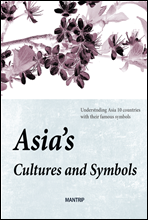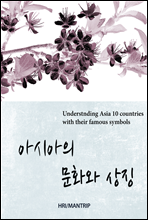
Cultures and Symbols of Asia
- 저자
- HRI 저
- 출판사
- Mantrip
- 출판일
- 2015-12-18
- 등록일
- 2016-11-14
- 파일포맷
- EPUB
- 파일크기
- 4MB
- 공급사
- YES24
- 지원기기
- PC PHONE TABLET 웹뷰어 프로그램 수동설치 뷰어프로그램 설치 안내
책소개
Businessmen in the global age move all around the world. Here, what is more important than fluent language skills is understanding the culture of that country. Based on the core symbols of each culture, this course deals with the essential cultural knowledge including unique customs, dispositions of the people and gestures to avoid.
A big continent that accounts for nearly 1/3 of the world's lands - Asia. Different countries in Asia hold different "national symbols" and "cultures" that appear similar to each other. Why don't we expand our perspectives through the symbols and anecdotes behind the landmarks of each country and the customs of specific cultures? First, we start with anecdotes behind the representative symbols and culture of Japan, the country that values courtesy and practical substances.
Why did China use "pandas" to solve diplomatic issues? Why do Chinese people especially love "Guan Yu" among many characters from "The History of Three States"? As the proverb "Everything is determined by the 'kuanxi' (relationship)", Chinese people value humanly relationships based on trust. Let's explore more about China, the country that pursues both faith and practical interests.
What is the reason behind elephants being considered as sacred and mystical creatures in Thailand? It is because the virtues required by almost every religion can be found in the characteristics of elephants. Thailand is a true Buddhist country with millions of Buddhist temples and monks respected as mental leaders. Let's learn about Thailand, the Buddhist country that prioritizes Bukun and courtesy.
It is a well known fact that India worships "cows". People respect the cows to let them go first anywhere and everywhere. Why do Indians consider cows, especially female cows sacred? The answer is in the doctrine of reincarnation of Hinduism. We now take a look at India, the country of Hinduism that worships cows.
In Indonesia, the phrase "kira-kira" can be easily heard, meaning "about, a






